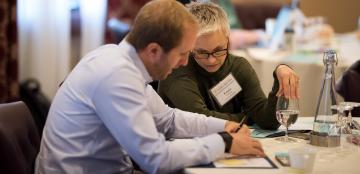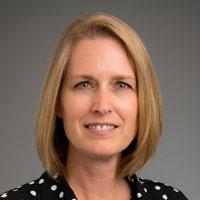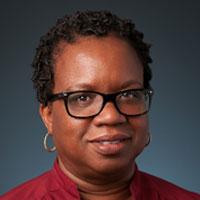
Hitting Reset on Professional Development
We all know the drill.
School staff members are gathered in the auditorium to sit and listen to an expert who is going to tell them how to cure all their instructional ills. It is a professional development day on campus. The kids are at home, the tables are turned, and it’s time for teachers to do the learning.
The content of this training will depend on how a school or district views the needs of its teachers. Do they need more or better curricular resources? Do they need content development? Do they need pedagogical support? Do they need strategies for promoting positive classroom culture?
Between the two of us, we’ve spent more than 50 years teaching science (biology, chemistry, physics, and more) and maybe another 20 years facilitating professional learning—face-to-face and online, in single sessions or years-long engagements. We’ve worked in Texas, California, Rhode Island, Indiana, Louisiana, North Carolina, England, Germany, Spain, Japan, and more! And, as professional learning facilitators, we want to work ourselves out of a job.
Let’s back up for a moment.
Our society—families, community members, district leaders, policymakers—expects our teachers to engage our students in rigorous and relevant learning experiences that lead to true understanding and transferrable skills.
It follows, then, that we—professional learning facilitators, instructional leaders, administrators, and more—should do no less for our teachers. Yet the way we teach teachers has not kept pace with the way we teach children.
So, how do we support teachers in ways that actually lead to more effective teaching and learning?
Partnering Matters
One size does not fit all. Context is key.
We’ve found that new learning plans are more effective (and sustainable) when professional development providers are able to work in long-term partnerships with teachers and leaders at all levels of a system to co-determine—and, often, co-develop—the most effective ways to meet the contextualized needs of staff and students.
Further, we know that teachers are professionals who deserve opportunities to participate in decisions about their own professional growth. The knowledge and skills needed to improve teaching practice are not the same for each individual teacher, and successful learning requires a direct connection between the work teachers do and their professional development opportunities.
Helping leaders and teachers uncover and address their own strengths and challenges is the foundation for meaningful professional growth. We professional learning facilitators know that when we learn about and internalize your goals, we can collaborate together to create useful, contextualized professional learning to better serve your needs and the needs of your students.
We are elated when we see great teaching and evidence of increased student learning. We want the educators and education systems we work with to consider us not as outside experts with all the answers, but as active participants invested in strengthening your system.
Organizational Learning Must be Part of Organizational Culture
Student outcomes are shaped by teachers, school and district leaders, parents, counselors, curriculum specialists, countless other individuals and roles—and by the students themselves. Among all these people and roles, the quality of teaching continues to be a critical element.
When a school’s structures, routines, and rituals (its culture) are aligned to support professional learning, teachers get the time they need to work together, and the practical skills to enhance their everyday work.
When teachers help each other unpack and interpret tacit understandings—for example, of a standard, of a particular pedagogical move—those understandings can be enhanced, even reshaped, by the collective knowledge and experience of the group. Translated into actionable next steps, these clarified understandings can lead to greater student outcomes.
But it’s difficult to achieve this increased clarity without structured processes to guide collaborative learning and discourse—that is, to focus conversations on learning from instructional experiences and making future decisions that move all students toward desired goals.
Professional learning facilitators can guide and support this productive discourse among educators so that ongoing collaborative learning becomes habitual—and thus part of organizational culture.
Leaders are Crucial to Organizational Change
The confluence of leadership and teaching proficiency (content knowledge, content-specific pedagogies, and teaching practice) is commonly known as instructional leadership.
Good instructional leaders, whether administrators, coaches, or curriculum specialists, build strong relationships with teachers by working side-by-side as partners in the hard work of individual and organizational learning.
Being engaged with professional learning as an instructional leader is essential. We know it’s tempting to work on a laptop at the back of the room during a session, but that’s not participating or even truly observing.
Effective instructional leaders need to understand what teachers are learning and doing so they can figure out how best to support them. Prioritizing your time with teachers and investing in their learning sends the message that you genuinely care, not only about school improvement, but about teachers’ personal and professional growth.
Positive change rarely happens without capable leaders, and leaders need support and ongoing learning as well. A solid professional learning plan should also address the needs of leaders, both formal and informal. Experienced professional learning facilitators will never tell you otherwise.
We said we want to work ourselves out of a job as professional learning facilitators. We meant it.
When your school or district or system engages in long-term partnerships to strengthen your organizational learning and support your instructional leadership, you are seeding and nurturing a deep-rooted—and self-sustaining—culture of continuous improvement.
About the Author
Shelly LeDoux
My high school chemistry teacher laughed when I told him I wanted to major in math or science in college. He told me those were career paths for boys. I’m glad I didn’t listen to him and proud that I went on to teach AP Chemistry and author a book of chemistry activities. There is no mission more important than nurturing the intellect and aspirations of children.
About the Author
Barbara Taylor
I taught middle school and high school science for 29 years, working in the Austin and Round Rock independent school districts. In the Austin ISD, I taught middle school science at Dobie Middle School for 20 years before moving to the science academy at the LBJ Liberal Arts and Science Academy (LASA) where I taught biology, Advanced Placement biology, and earth sciences. In Round Rock ISD, I taught environmental systems, AP environmental science, biology, and AP biology.
Get in Touch
How can the Dana Center work with you to ensure that our nation's students are ready for postsecondary education and the contemporary workforce?


